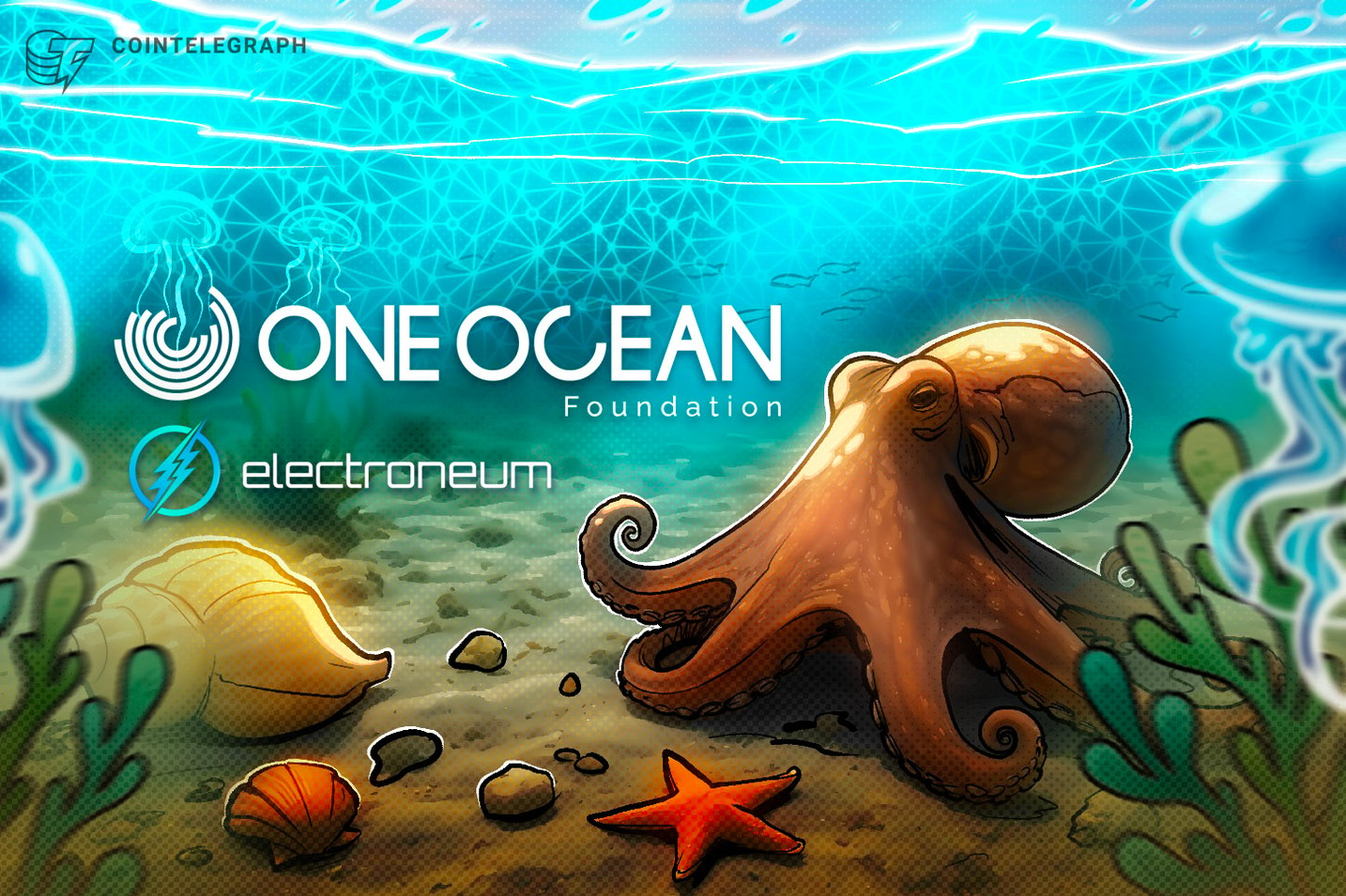Sponsored Content
The Blockchain Futurist Conference returned to Miami on Nov. 5–6, bringing more than 6,500 industry participants together for two days of conversation and debate on all things blockchain including DeFi, Web3, NFTs and sustainability.
Sustainability was the hot topic of the fireside chat “How Non-Profits and Brands Embrace Digital Assets,” where Electroneum, One Ocean Foundation, Rarible and artist Andrea Crespi outlined how blockchain can support transparent, low environmental impact funding models for NGOs.
The panel’s central announcement was a joint initiative that mints an NFT collection to fund ocean restoration through One Ocean Foundation’s Blue Forest project in the Mediterranean. The effort directs 100% of proceeds to seagrass reforestation and is built on Electroneum’s low-energy blockchain to ensure sustainable minting and public traceability.
The panel emphasized that the partnership’s viability relies on infrastructure that can support cost-efficient execution and traceable fund flows. Head of business development for One Ocean Foundation, Daniele Acciaro, said Electroneum’s efficiency enables art, environmental impact and technology to function in a unified framework without the resource burden of traditional chains.
“Three worlds, art, blockchain and sustainability, come together for one mission: protect the ocean,” Acciaro said. The project was recently awarded third place from dozens of shortlisted projects for the Areté Premio, which recognizes innovations that combine sustainability, art and digital technology.
Low-energy infrastructure shapes the collaboration
Electroneum’s validator framework is operated by a small group of NGOs and foundations that validate the network and keep its energy use low. CEO Richard Ells noted that sustainability is becoming a structural expectation rather than a branding exercise, saying Electroneum aims to provide a practical foundation for long-term, responsible deployment.
“We are excited to see how brands, climate aware companies and foundations can use the Electroneum blockchain for projects that they’ve been unable to entertain on the energy-inefficient networks that we are used to,” he said, adding that he is “excited to see multiple projects coming in 2026 opting to utilize the Electroneum blockchain.”
Lowering barriers to participation
Users without any experience of crypto can buy an Andrea Crespi NFT by making a donation of 50 Euros at One Ocean Foundation’s website.
More tech-savvy users can head straight to Rarible, which recently integrated the Electroneum blockchain. Rarible is one of the largest and busiest NFT trading sites, and co-founder Alexander Salnikov appeared on the panel where he described NFTs as a practical entry point for newcomers and said simplified flows make participation more accessible.
“Web3 should be fun and meaningful. Get a wallet, buy your first NFT, join a community,” he told the audience. Electroneum’s low-cost infrastructure complements this approach by reducing minting expenses and keeping environmental impact minimal.
Artist Andrea Crespi created a reimagined version of The Three Graces, divided into 2,000 digital fragments and minted on Electroneum’s network. Each fragment functions independently, and the full artwork appears only when the pieces are viewed together.
Crespi said the structure reflects collective action, describing art as “a tool for change,” where “each NFT fragment is a symbolic drop contributing to the larger ocean.” He added that the format offers “a poetic way to make the collector part of something bigger.” Collectors can mint and own a piece of the collection on One Ocean Foundation’s website.
Electroneum’s presence across the conference
Beyond the panel, Electroneum engaged with exchanges, infrastructure teams and analytics providers interested in sustainable layer-1 alternatives. Discussion topics included integration, validator design and regulatory alignment, all reflecting growing institutional attention on environmental considerations.
Several attendees noted that Electroneum’s NGO-driven validator model could serve as a template for low-impact blockchain deployment.
The Miami Blockchain Futurist Conference was amazing. 🔥@andcrespi @OneOceanFound @rarible pic.twitter.com/baBNjgwOVY
— electroneum (@electroneum) November 7, 2025
Industry conferences have traditionally emphasized throughput, liquidity and institutional inflows, yet this year’s Miami program signaled a broader view of what long-term blockchain success may require. Discussions about tokenization and AI-enhanced protocols often raised questions about the resources used and how to be environmentally responsible.
Electroneum’s participation served as a case study in how to incorporate sustainability-driven design into real-world applications without compromising accessibility or performance.
